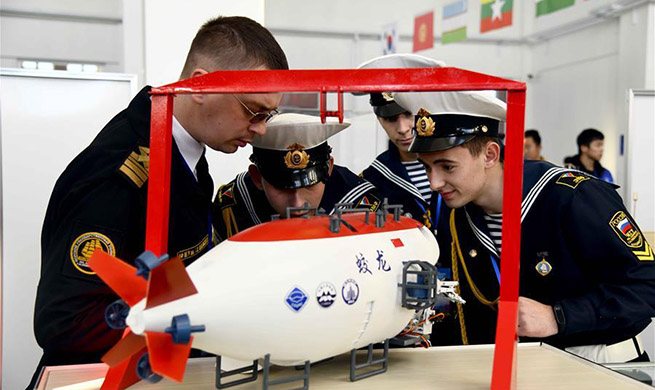ROME, Nov. 11 (Xinhua) -- Foreign-born workers contributed 9 percent of Italy's gross domestic product (GDP last year, according to a study unveiled at a conference here on Monday.
Titled "Are foreigners stealing our job?", the research was carried out by Venice-based Leone Moressa Foundation in cooperation with Money Gram, on data by the National Institute of statistics (ISTAT).
With the aim of dispelling stereotypes on immigration, it provided various insights about the impact and roles played by foreigners in the domestic market.
UPWARD INCIDENCE
Some 2.46 million migrant workers -- including employees, self-employed, and entrepreneurs -- were registered in 2018 (out of total 5.14 million foreigners that year), the study said.
It made 10.6 percent of the country's workforce (some 23.2 million).
Since 2004, when the country counted some 965,000 foreign workers only (4.3 percent of the workforce), their incidence showed a constant upward trend.
"The most intense growth was detected up to 2014, when the number of foreign workers exceeded 10 percent (of total workforce)," the research explained.
"Then, it leveled off in the following five years, due to factors such as a drop in work permits, the acquisition of Italian citizenship, and a recovery in occupation among Italians."
SECTOR AND CONTRIBUTION
Overall, foreign workers contributed 139 billion euros (153.4 billion U.S. dollars), or 9 percent of Italy's GDP in 2018, the Leone Moressa Foundation estimated on the base of ISTAT statistics.
They made 45.1 percent of workforce in service, 17.9 percent in manufacturing, 10.8 percent in catering and hotels, 10.1 percent in retail, 9.9 percent in construction, and 6.4 percent in agriculture.
Despite such distribution, the largest value added contribution was originated "by foreigners in catering and hotels (18.6 percent), in agriculture (17.8 percent), and construction (17.6 percent)," the research highlighted.
STEREOTYPE TO DISPEL
As its title suggested, the study warned the most negative myth to dispel was that immigrants would somehow "rob" Italians of their space in the job market.
This perception was due to various factors, researchers explained, including the fact that the overall number of Italian workers dropped from 21.3 million to 20.7 million between 2004 and 2018.
Another was that the number of jobless Italians (2.4 million) more or less matched with foreign-born employees (2.46 million) in 2018.
Yet, they explained this perception was wrong under many points of view.
"One major reason behind this misperception is that Italy is a country of relatively recent immigration," researcher Chiara Tronchin told the conference.
"Foreigners here did not reach 400,000 people in 1991, and grew up to over 5 million in latest years, " she stressed.
While this relatively swift growth left many Italians disoriented, Tronchin continued, Italy went through a "demographic winter", with its population rapidly aging and a drastic drop in birth rate.
The working-age component (15-64 years) among Italians thus fell from 36.8 million in 2004 to 34.7 million in 2018, while it grew from 1.5 million to over 4 million among foreigners.
"Actually, foreigners helped stopping the demographic decline, keeping the total volume (of working-age population) constantly above 38 million," the study stressed.
COMPLEMENTARY ROLES
Beside that, foreigners were not "stealing jobs" from Italians simply because the two groups had different characteristics, and played complementary roles in the job market, the study noted.
Italians were averagely older and had better qualifications, while the share of foreign workers with an upper secondary education "drastically fell in the last nine years, and the share of those with a university degree did not rise."
Thus, they distributed accordingly across the job market.
For example, the study estimated 38.9 percent of Italian workers had a qualified job against 7.6 percent of foreign workers in 2018, while the opposite occurred for low-skilled jobs (8.3 percent and 33.3 percent, respectively).
However, researchers noted that foreign workers also remained underemployed here, which would not much benefit the country's economy overall.
"Underemployment is a problem affecting our whole job market; yet, we estimate it to concern some 40 percent of foreign workers against some 30 percent of Italian employees," Enrico Di Pasquale told Xinhua.
The researcher detected at least three factors behind this, including a stronger need for foreigners to accept any kind of occupation (for fear of losing the work permit), the difficulty for some with a degree to have it recognized, and also a cultural gap among Italian employers.
"Because of the strong fragmentation of our job market, a foreigner will often be offered as first solution a low-skilled job as caregiver, bricklayer, or laborer, regardless of his or her qualification," he said.













